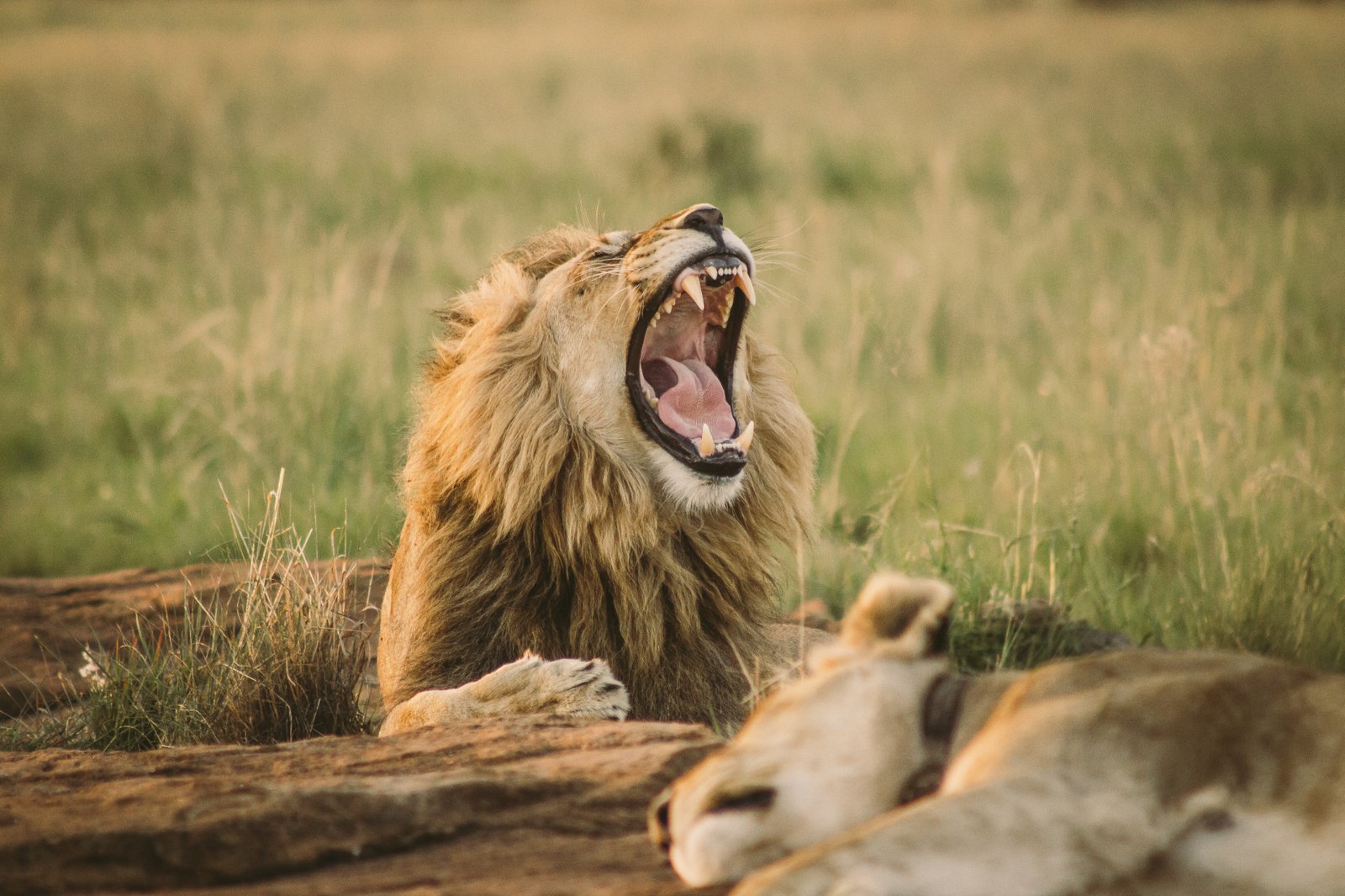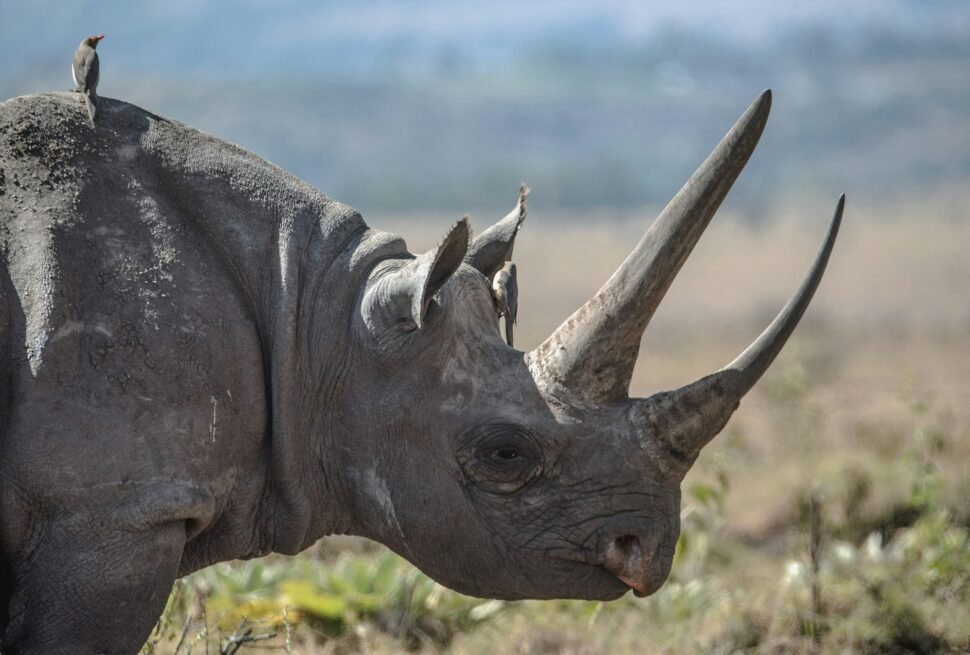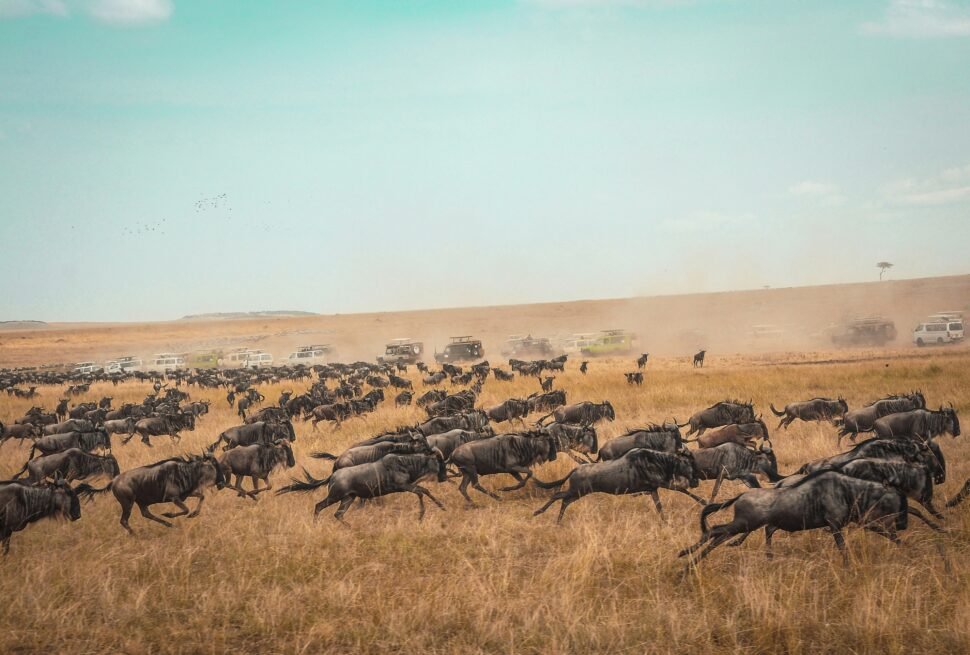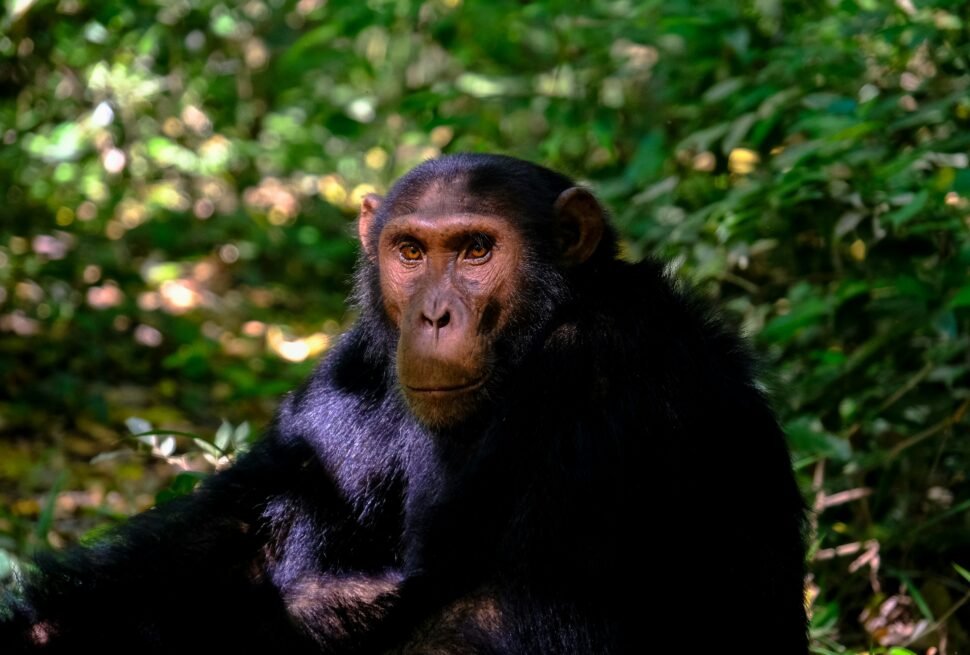Introduction
Tanzania is one of the best places in the world to experience a safari. Its national parks, like the Serengeti and Ngorongoro Crater, are home to a wide range of animals and stunning natural scenery. Every year, visitors come to Tanzania to see some of the most famous wildlife in Africa, including the Big Five: lion, leopard, elephant, rhinoceros, and buffalo.
The term “Big Five” was first used by hunters to describe the five most dangerous animals to hunt on foot. Today, the Big Five are a symbol of Africa’s incredible wildlife and a key attraction for safari tourists. These animals are not just exciting to see but are also important for maintaining healthy ecosystems.
This guide will help you learn more about these iconic animals and where you can see them in Tanzania. Whether you’re planning a trip or just curious about the Big Five, this is the perfect starting point.
Lions
Lions, often called the “king of the jungle,” are one of the most recognized and admired animals in the world. Known for their strength, courage, and social nature, lions live in groups called prides, which typically include a few adult males, multiple females, and their cubs. They are apex predators, meaning they are at the top of the food chain, and play a vital role in maintaining the balance of ecosystems by controlling herbivore populations.
In Tanzania, lions thrive in several national parks, making it one of the best places to observe these majestic animals. The Serengeti National Park is world-famous for its large lion population, especially during the Great Migration when prey is abundant. Another excellent spot is the Ngorongoro Crater, where lions are often seen lounging in the grasslands. The Ruaha National Park is also a fantastic destination, offering a more secluded and off-the-beaten-path experience for lion sightings.
Lions hold significant cultural value in Tanzania, often symbolizing strength and leadership in local folklore and traditions. For example, in many African cultures, lions are regarded as protectors and are often included in tribal stories and artwork.
Fun Fact: Lions are the only cats that live in groups. A single pride can include up to 30 lions, and the females do most of the hunting, while males primarily defend the pride’s territory.
Spotting a lion in its natural habitat is an unforgettable experience that gives you a deep appreciation for the power and grace of Tanzania’s wildlife.
Leopards
Leopards are among the most elusive and fascinating animals in Tanzania. Known for their stealth, agility, and solitary behavior, these big cats are expert hunters that rely on their ability to blend into their surroundings. Leopards are strong climbers and often drag their prey up into trees to protect it from scavengers like hyenas. Their sleek, spotted coats provide excellent camouflage, making them difficult to spot even in open landscapes.
Tanzania offers several excellent locations for leopard sightings. Serengeti National Park is one of the best places to see these magnificent cats, particularly in the rocky kopjes (granite outcrops) where they often rest or hide. Tarangire National Park is another hotspot, known for its dense vegetation and baobab trees that leopards love to climb. The lush forests of the Selous Game Reserve and Ruaha National Park also provide ideal habitats for these predators.
Leopards are shy and prefer to avoid human contact, so spotting one requires patience and sharp eyes. Here are some tips:
- Focus on early mornings or late afternoons when leopards are most active.
- Scan tree branches, as leopards often rest there during the day.
- Keep an eye out near waterholes or riverbanks where prey animals gather.
Notable Trait: Leopards are known for their incredible strength and can carry prey that weighs more than they do up into trees, showcasing their powerful muscles agility.
Seeing a leopard in the wild is a rare and rewarding experience. Their grace and mystery make them one of the most captivating members of Tanzania’s Big Five.
Elephant
Elephants are the largest land animals on Earth and a true symbol of strength and intelligence. They are essential to their ecosystems, often referred to as “ecosystem engineers.” Elephants shape their environment by uprooting trees, creating pathways in dense vegetation, and digging for water during droughts, which benefits other species. Their diet, which includes large amounts of plant matter, helps disperse seeds and promote vegetation growth.
Tanzania is home to significant elephant populations, and several parks offer incredible opportunities to see them in the wild. Tarangire National Park is renowned for its large herds, particularly during the dry season when elephants gather near the Tarangire River. Serengeti National Park also offers excellent sightings, especially during the migration season when elephants move alongside other wildlife. In southern Tanzania, Ruaha National Park and the Selous Game Reserve provide quieter and less crowded options for observing elephants in their natural habitat.
Despite their majestic presence, elephants face severe threats. Poaching for ivory remains a significant issue, along with habitat loss due to human expansion and agricultural activities. In response, Tanzania has implemented various conservation efforts. Organizations like the Tanzania Wildlife Management Authority (TAWA) and Wildlife Conservation Society (WCS) work tirelessly to combat poaching, enhance anti-trafficking measures, and educate local communities on the importance of protecting elephants. National parks and reserves have increased patrols, while eco-tourism initiatives contribute to funding these efforts.
Unique Traits: Elephants are known for their intelligence, long-term memory, and strong social bonds. They communicate using low-frequency rumbles that can travel several kilometers, helping them coordinate movements and stay connected.
Witnessing elephants in their natural habitat is both humbling and inspiring. These gentle giants not only embody the wild spirit of Africa but also remind us of the importance of conserving Tanzania’s incredible wildlife.
Elephant
Elephants are the largest land animals on Earth and a true symbol of strength and intelligence. They are essential to their ecosystems, often referred to as “ecosystem engineers.” Elephants shape their environment by uprooting trees, creating pathways in dense vegetation, and digging for water during droughts, which benefits other species. Their diet, which includes large amounts of plant matter, helps disperse seeds and promote vegetation growth.
Tanzania is home to significant elephant populations, and several parks offer incredible opportunities to see them in the wild. Tarangire National Park is renowned for its large herds, particularly during the dry season when elephants gather near the Tarangire River. Serengeti National Park also offers excellent sightings, especially during the migration season when elephants move alongside other wildlife. In southern Tanzania, Ruaha National Park and the Selous Game Reserve provide quieter and less crowded options for observing elephants in their natural habitat.
Despite their majestic presence, elephants face severe threats. Poaching for ivory remains a significant issue, along with habitat loss due to human expansion and agricultural activities. In response, Tanzania has implemented various conservation efforts. Organizations like the Tanzania Wildlife Management Authority (TAWA) and Wildlife Conservation Society (WCS) work tirelessly to combat poaching, enhance anti-trafficking measures, and educate local communities on the importance of protecting elephants. National parks and reserves have increased patrols, while eco-tourism initiatives contribute to funding these efforts.
Unique Traits: Elephants are known for their intelligence, long-term memory, and strong social bonds. They communicate using low-frequency rumbles that can travel several kilometers, helping them coordinate movements and stay connected.
Witnessing elephants in their natural habitat is both humbling and inspiring. These gentle giants not only embody the wild spirit of Africa but also remind us of the importance of conserving Tanzania’s incredible wildlife.
Rhinoceros
Rhinoceroses, with their imposing size and iconic horns, are among the most endangered members of the Big Five. These powerful animals are symbols of strength and resilience but have become increasingly rare due to poaching and habitat loss. Two species of rhinoceroses are found in Africa: the black rhino and the white rhino. Tanzania is home primarily to black rhinos, known for their smaller size, hooked upper lip, and solitary behavior.
The Ngorongoro Crater is one of the best places in Tanzania to see rhinos. It provides a safe haven for a small but vital population of black rhinos, thanks to strict conservation measures. With its enclosed terrain and active monitoring programs, the crater offers visitors a rare opportunity to spot these elusive creatures in the wild. Beyond Ngorongoro, rhino populations are being gradually reintroduced to parks like the Serengeti as part of long-term conservation efforts.
Historically, rhino populations were decimated by poaching, driven by the high demand for their horns, which are falsely believed to have medicinal properties and are also valued as status symbols in some cultures. By the late 20th century, rhino numbers in Tanzania had plummeted to critical levels.
Today, Tanzania is actively combating this crisis through strict anti-poaching laws, increased patrolling, and international collaborations. Organizations like the Tanzania National Parks Authority (TANAPA) and the Frankfurt Zoological Society work tirelessly to protect rhinos and their habitats. Community-based conservation initiatives also play a vital role, involving local people in wildlife protection and providing alternative livelihoods to reduce reliance on poaching.
Current Status: Although still critically endangered, black rhino populations are slowly recovering due to these efforts. However, the battle is far from over, and continued vigilance is crucial to ensure their survival.
Seeing a rhino in Tanzania is a privilege and a powerful reminder of the importance of protecting these extraordinary animals for future generations.
The Resilience of the Buffalo
The African buffalo, also known as the Cape buffalo, is one of the most resilient and formidable animals in the savannah. Known for their stocky build, large curved horns, and unpredictable nature, buffalo are highly social animals that live in herds ranging from a few dozen to several hundred. These herds play a crucial role in the savannah ecosystem, grazing on grasses and opening up the landscape for other herbivores while helping maintain the balance of vegetation.
In Tanzania, buffalo are abundant and can be seen in most major parks. Serengeti National Park is one of the best places to witness large herds roaming the plains, especially during the dry season when water sources become concentrated. The Ngorongoro Crater also provides excellent buffalo sightings due to its high animal density. For a more off-the-beaten-path experience, Katavi National Park offers incredible views of buffalo in a less crowded setting, where massive herds gather near seasonal waterholes.
Buffalo are known for their resilience and teamwork. When threatened by predators like lions, they form a protective circle around their calves, facing outward with their horns to defend the group. This defensive behavior, combined with their unpredictable temperament, makes them one of the most dangerous animals in Africa despite being herbivores.
Memorable Fact: African buffalo are incredibly strong and can run up to 35 miles per hour (56 km/h). They are also known to return to confront predators that have attacked members of their herd, showing remarkable loyalty and courage.
Seeing a buffalo herd in the wild is a testament to the strength and unity of these animals. Their presence on the savannah adds to the drama and excitement of a Tanzanian safari.
Beyond the Big Five: Honoring All Wildlife
While the Big Five are undeniably iconic, Tanzania’s biodiversity extends far beyond these magnificent creatures. The country is home to a stunning array of wildlife and ecosystems that deserve equal admiration. The Great Migration is a prime example, where over a million wildebeest, zebras, and gazelles move in a dramatic cycle across the Serengeti, offering an unparalleled spectacle of nature.
Tanzania is also a birdwatcher’s paradise, with more than 1,100 bird species, including the lilac-breasted roller, flamingos at Lake Natron, and the African fish eagle. Reptile enthusiasts will find an array of fascinating species, such as the colorful Agama lizard and the elusive Nile monitor. In the dense forests of parks like Gombe and Mahale, primates like chimpanzees showcase the country’s incredible diversity.
Tanzania’s varied landscapes, from the vast plains of the Serengeti to the wetlands of Selous and the lush forests of Udzungwa, create habitats for a wide range of flora and fauna. Appreciating the full spectrum of wildlife adds depth and meaning to any safari, emphasizing the intricate web of life that sustains these ecosystems.
By celebrating all of Tanzania’s wildlife, not just the Big Five, visitors gain a deeper connection to the natural world and contribute to the preservation of this extraordinary biodiversity.
Tips for an Unforgettable Big Five Safari
Planning a successful safari requires thoughtful preparation. Timing is crucial; the dry season, from June to October, offers the best chances of seeing the Big Five and witnessing the Great Migration. During this time, animals gather around water sources, making them easier to spot.
Pack lightweight, neutral-colored clothing to blend into the environment, and don’t forget essentials like binoculars, sunscreen, and a camera with a good zoom lens. Traveling with a good tour operator is vital for tracking elusive animals like leopards and rhinos while ensuring your safety.
For a more meaningful trip, practice sustainable tourism. Avoid littering, respect wildlife by maintaining a safe distance, and choose eco-friendly lodges that support conservation efforts. Engaging with local communities also enriches your safari experience while contributing to the local economy.
By planning wisely and traveling responsibly, you’ll create lasting memories and leave a positive impact on Tanzania’s natural heritage.
Conclusion
The Big Five are more than just wildlife—they represent the soul of Tanzania’s extraordinary safari experience. From the strength of elephants to the grace of leopards, each encounter tells a story of resilience, beauty, and the delicate balance of nature.
Komkya Safaris invites you to embark on a journey that goes beyond mere sightseeing. Our carefully curated safaris ensure you experience the Big Five and Tanzania’s unparalleled biodiversity in comfort and style.
A Tanzanian safari is not just a vacation; it’s an adventure that inspires, educates, and creates memories that last a lifetime. Book your trip today with Komkya Safaris, and discover the magic of Tanzania for yourself.




